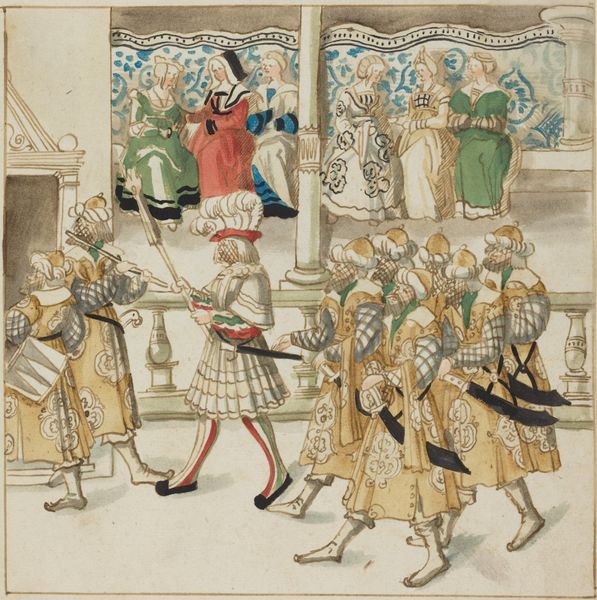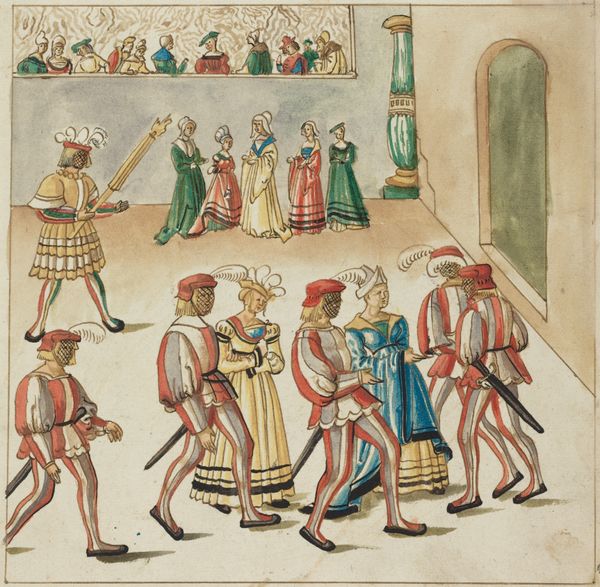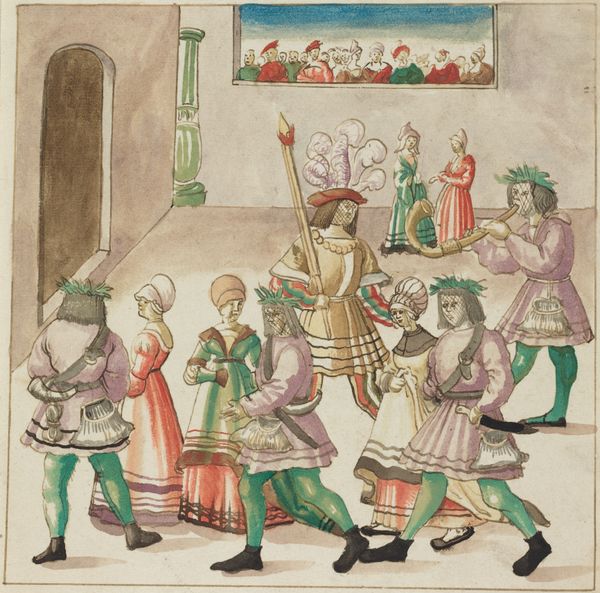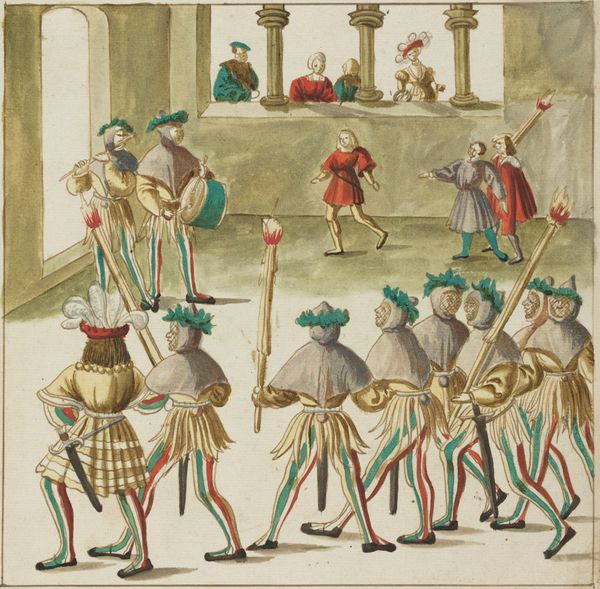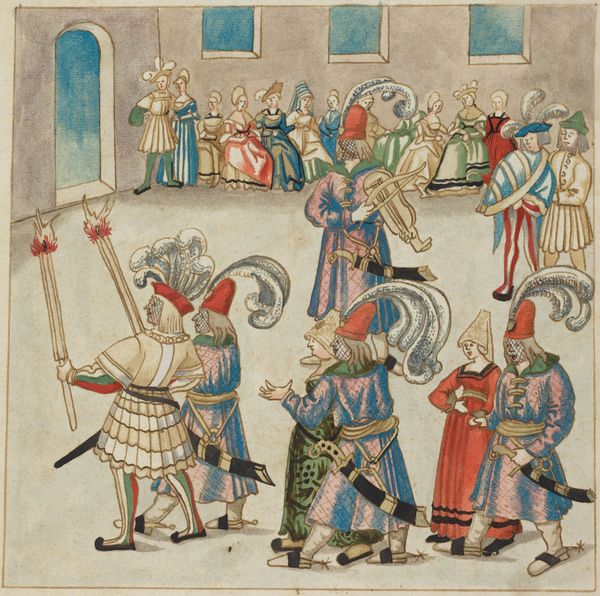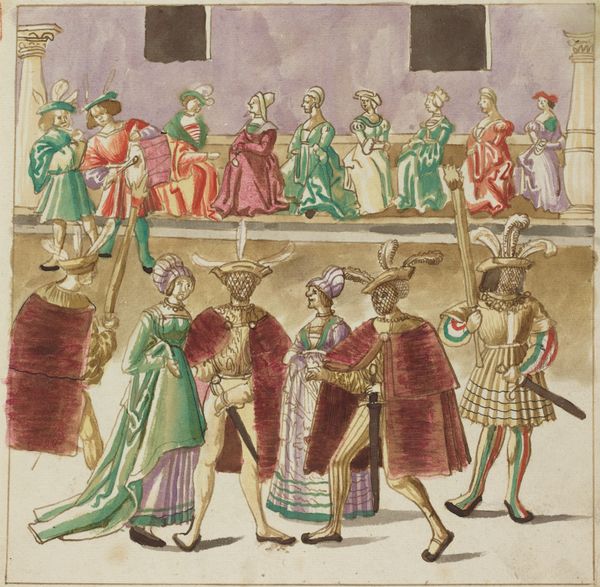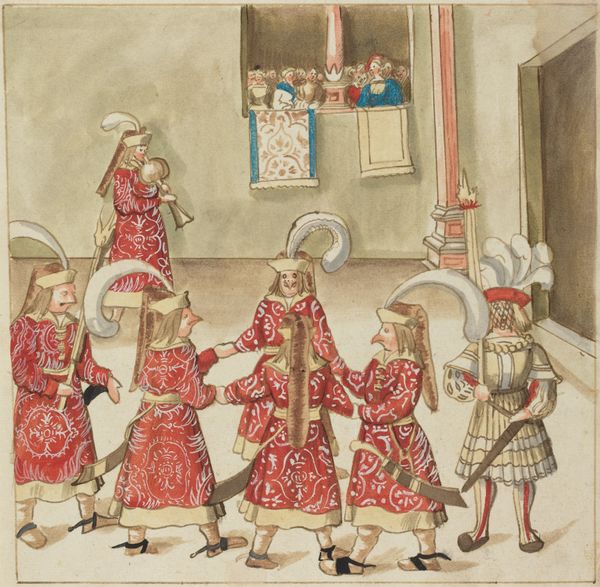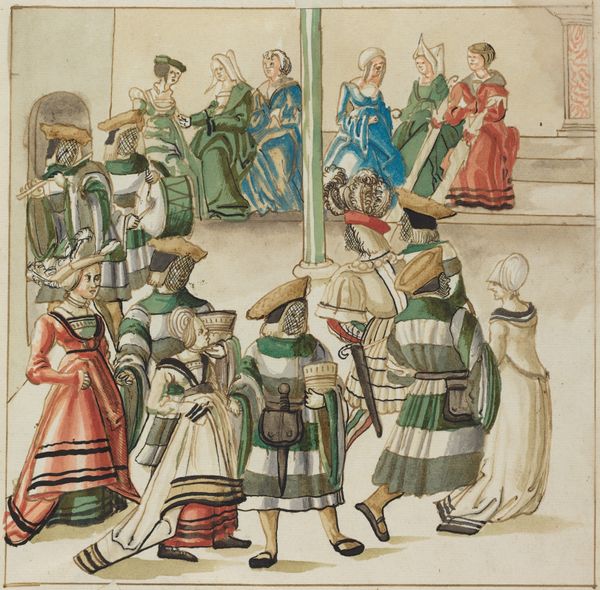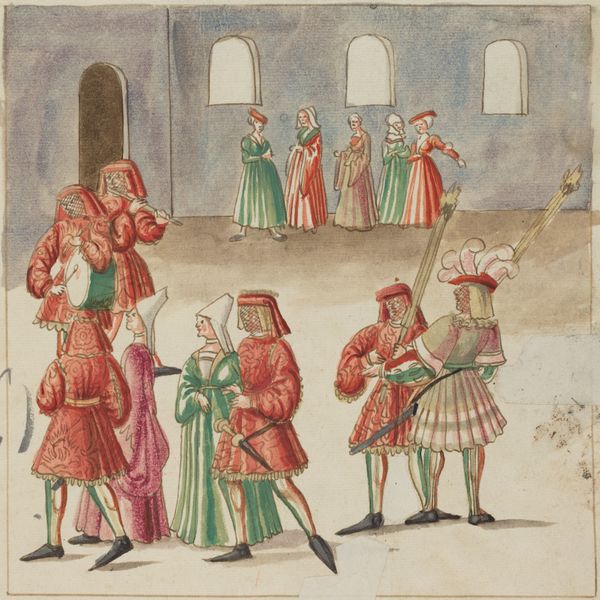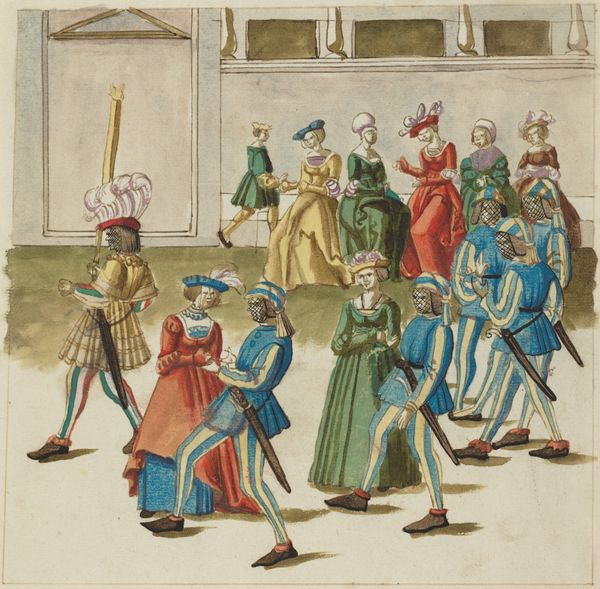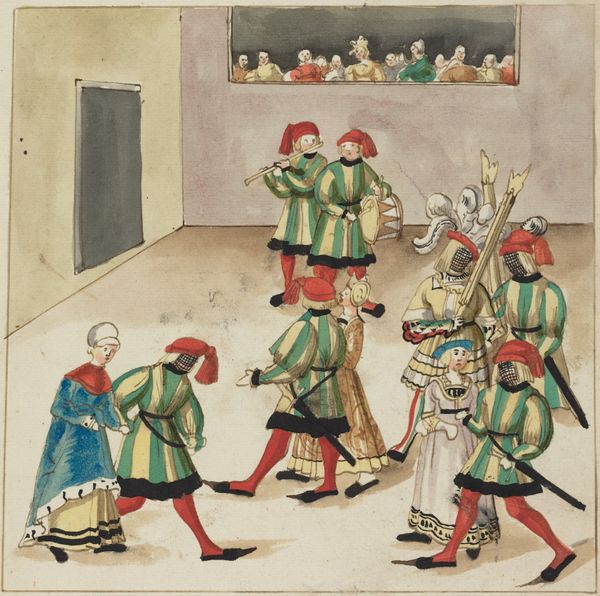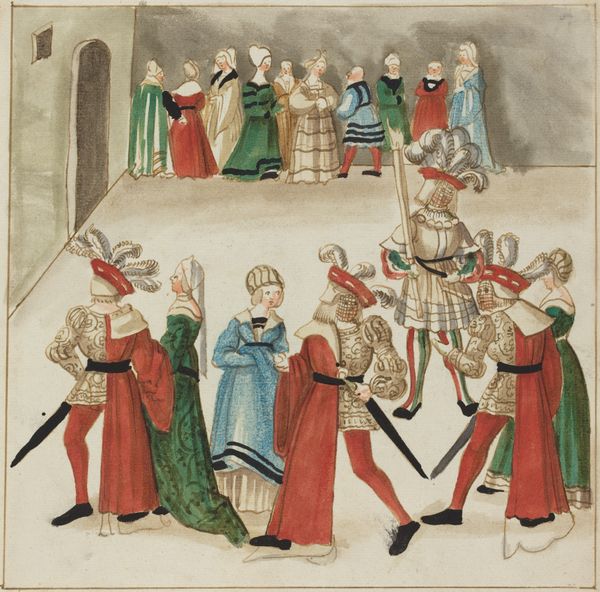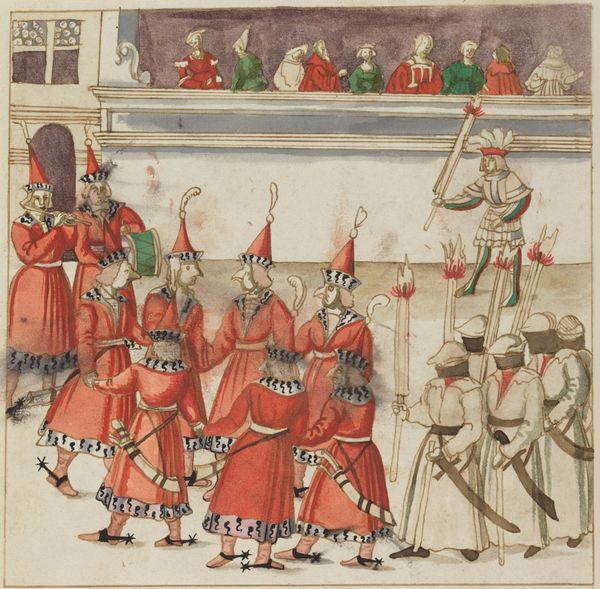
Men in Red, White and Blue Dancing with Their Partners c. 1512 - 1515
0:00
0:00
drawing, coloured-pencil, watercolor
#
drawing
#
coloured-pencil
#
water colours
#
narrative-art
#
figuration
#
watercolor
#
coloured pencil
#
genre-painting
#
italian-renaissance
#
miniature
#
watercolor
Dimensions: image: 23.4 cm (9 3/16 in.) sheet: 33 x 26.4 cm (13 x 10 3/8 in.)
Copyright: National Gallery of Art: CC0 1.0
Curator: "Men in Red, White and Blue Dancing with Their Partners," a watercolor and colored-pencil drawing dating from around 1512 to 1515. It is the work of an anonymous artist during the Italian Renaissance. Editor: The muted tones lend this small scene a strangely dreamlike quality, a wistful atmosphere despite the apparent merriment. I’m particularly drawn to the repetition of the striped costumes and the geometry they create in the foreground. Curator: The choice of red, white and blue for the dancers’ costumes certainly resonates politically. This was a period of significant tension and conflict amongst the Italian states, often fueled by foreign intervention, and clothing often became an overt marker of political affiliation. Who was “in” and who was “out.” Editor: Tell me more. From my vantage point, the figures and color work contribute significantly to the work's overall structure and rhythm. The horizontal stripes lead the eye, yet the lack of sharp color differentiation or bold shading soften it into a gently captivating vista. Curator: In early 16th-century Italy, sumptuary laws restricted certain colors and fabrics to specific social classes and political factions. While this artwork gives us visual pleasure, it is not beyond critical analysis when considering who had access to it and the socio-political implications for ordinary people during the Renaissance. Editor: Yet even without explicit knowledge of those specific constraints, I appreciate how the relatively flat, shadow-free figures against the building behind direct the eye; it isolates these characters in a space outside the normal parameters of everyday life. The dancers' outfits have visual primacy—which reinforces what you point out as potentially exclusionary at the time! Curator: We can ponder the nuances and the ways people actively resisted or subverted cultural norms. We need to contextualize how symbols and visual cues reflect or critique prevailing ideologies. Editor: Your analysis sheds light on the power dynamics embedded within seemingly celebratory imagery. I appreciate how exploring social and political dimensions enriched my purely aesthetic interpretation of the work, to go from an intuitive understanding of visual structure and color theory into broader fields of contextualization. Curator: And by focusing on formal components, you are, in fact, providing critical insights that help deepen the work's impact by bridging past and present perspectives and, moreover, how people perceive art in different ways!
Comments
No comments
Be the first to comment and join the conversation on the ultimate creative platform.
